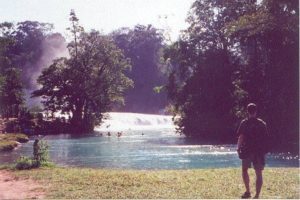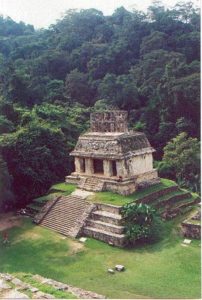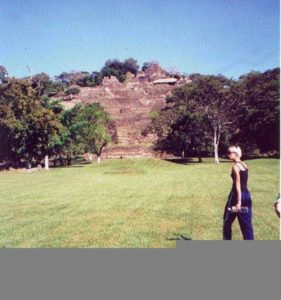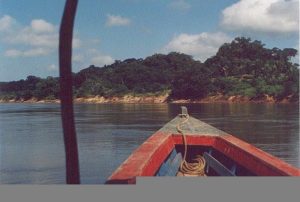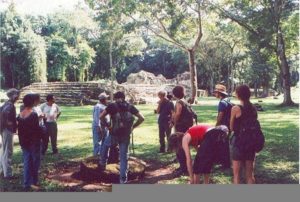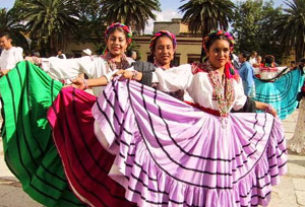Many visitors in San Cristóbal de las Casas, Chiapas, realize that the quaint mountain town, aside from being a destination in itself, is a perfect jumping-off point for dozens of side-trips. Surrounding indigenous villages, the Lagos de Montebello, and even Palenque, four hours away, are accessible for ambitious travelers. But not many tourists venture deeper into the Lacandón jungle, one of the most biodiverse (though under-appreciated) rain forests in the world, and home to some of the country’s most impressive Mayan ruins.
Wanting to explore la selva but unsure how to embark (guidebooks tend to have thin Lacandón coverage), two friends and I signed on for a three-day jungle trip organized by a San Cristóbal travel agent. Though I’m usually averse to the set itineraries of group tours, the schedule was enabling rather than confining in this case: the destinations are so spread out and remote that I willingly put myself in the hands of a professional outfit rather than wrestle with the bus schedules.
And thus, at seven a.m. on a misty San Cristóbal morning, nine tourists – from Italy, Mexico City, and the United States – piled into a Suburban with our guide, Rodulfo, and headed to one of the most enigmatic regions of Mexico.
DAY 1
We descended out of the mountains past Ocosingo and made our first stop at the ruins of Toniná. Toniná’s layout is unique in that it consists of progressively smaller terraces going up a mountain and not a cluster of buildings. We paused during the ascent to appreciate stone carvings, the living quarters of ancient Toniná families of various classes, and the ever-changing vista. Toniná was discovered relatively recently, in the 1980s, and it is still being excavated, lending a bit of Indiana Jones appeal to the outing – tourists were well outnumbered by archaeological workers. The museum displays a representation of what Toniná looked like before excavations began: an innocuous hill in the jungle, hinting at nothing that lay beneath the trees and soil.
Then it was back in the car and on to the waterfalls of Agua Azul, a beautiful spot offering a welcome break from the heat. The combination of turquoise water and pale tan rocks made it hard to remember I was in a natural setting and not on a movie set. Few visitors heeded the warnings to remain in the calm swimming area, opting to explore the rocks, cascades, and pools further downstream. We enjoyed lunch in one of the comedors and catnapped in the sun.
Then it was time for the long drive to our jungle headquarters, the small community of Lacanja. We met our host family, a husband and wife and their six daughters, and settled into the thatched-roof, dirt-floor cabana that housed our nine hammocks. After a delicious dinner of cheese quesadillas, beans, rice, and salsa, we sat around the campfire, listening to the nearby creek and gazing at the stars, until it was time for bed.
DAY 2
After breakfast, we bee-lined it for the Usumacinta river (encountering a few tough-talking military check points along the way). We all piled into a colorful lancha and made our way down the border river with Mexico on our left, Guatemala on our right, arriving at the ruins of Yaxchilán after 45 minutes. It was tough to focus on the ruins with all of the spider monkeys in the trees, mugging for our cameras. Even the less charismatic fauna – toucans, salamanders, butterflies, and bats flying around the eaves of the buildings – upstaged the riverside city until we climbed the long, steep staircase to the sacrificial altar, a spot that afforded a stunning view of the surrounding terrain as well as a glimpse of ancient rituals.
That afternoon, we struck out from a trailhead in Lacanja for an hour-long hike through the dense trees, brightly colored mushrooms and criss-crossing vines of the jungle to a little-known waterfall. Despite our Agua Azul training ground, we were timid about navigating the swift current and large rocks, but watching Rodulfo stand under the pounding water inspired us all to follow. He even convinced us to slather the mud from the bottom of the river on our faces, saying it was good for the skin – little did I know the bare-bones trip would include a facial.
DAY 3
We briefly stopped by Bonampak, a site most noted for its well preserved paintings, which clearly depict Mayan clothing, rituals, games, food preparation, and other aspects of day-to-day life. Aside from the frescos, there is not much to see, so we pressed on.
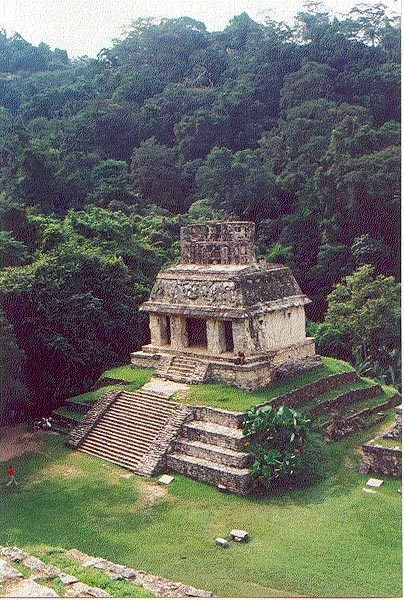
When we arrived at Palenque in the afternoon, I thought that I was already “ruined,” unable to digest another ancient city. But Palenque was the perfect finale for the jam-packed three days – the grandeur of the main plaza combined with the encroaching jungle stopped even jaded “ruin-aphiles” in their tracks. Of all the Mayan sites we visited, this was the one that most seemed to retain its past power. I looked at the looming stone buildings, remembering that when the city was thriving, the edifices were all painted bright red. It was hard to believe that only a small fraction of the entire city has been excavated – in its entirely, it must have been a veritable jungle metropolis. Unfortunately, the much discussed Temple of Inscriptions, Palenque’s tallest building, and its tomb of Pakal were closed during our visit (it was unclear for how long). After scaling the Templo de la Cruz and savoring the view, we followed the ecological trail through the foliage and past smaller buildings to the Otolum stream. Standing on the footbridge, we took some great photos of the waterfall. Visitors could spend an entire day exploring Palenque, but unfortunately we had to start the long drive home.
We returned to San Cristobal looking forward to a shower and a bed not made out of string, but the whirlwind of sites had left a strong impression of the vastness and diversity of la Selva Lacandona. When most people think of visiting the rainforest, countries such as Costa Rica, Ecuador, and Brazil first come to mind. While those places have their own appeal, a thriving jungle awaits visitors right here in Mexico. The region’s cultural and political significance – being the home turf of large populations of indigenous people as well as the epicenter of Zapatista consciousness and action – adds another element of interest (though not danger). Also, like most of the world’s rain forests, this one is under environmental threat, and a visit inspires travelers to assist in efforts to preserve it. Visitors receive a unique treat for making the effort to explore this southern-most area of Mexico – it should not be missed.

